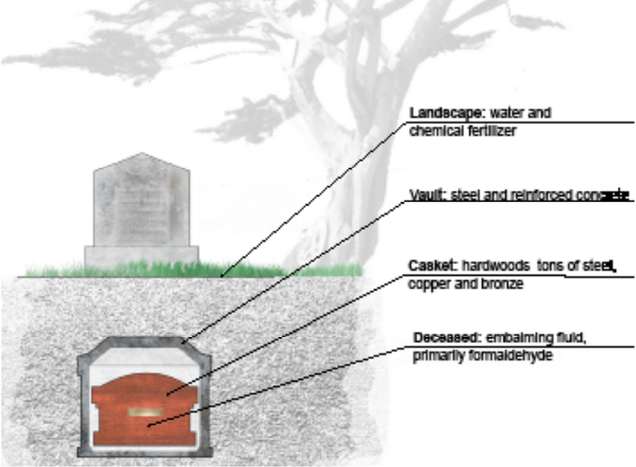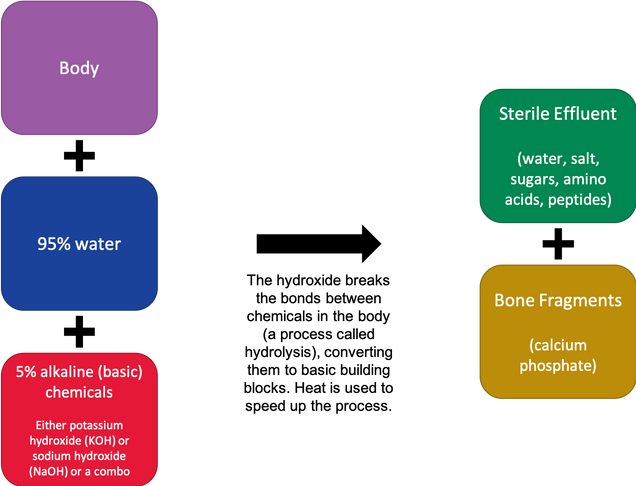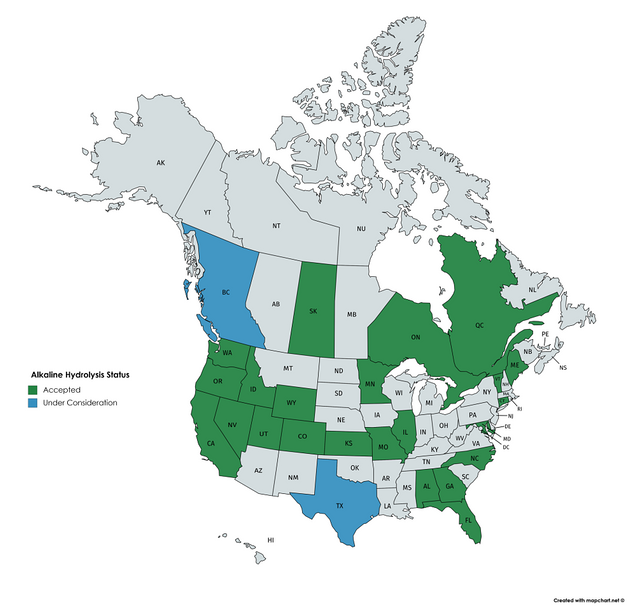By Tyler Heneghan
What Never Was: The Indigenous American Cultural Heritage Repatriation Problem
The unfortunate beginnings of the fetishization of Indigenous American cultural heritage occurred concurrently with the systematic disenfranchisement of Native Americans throughout the United States. These events led to the amassing of millions of Indigenous American cultural heritage objects in federal repositories, museums, and private collections by the early twentieth century. Concurrently, archaeologists and anthropologists, largely funded by public research institutions like museums and universities, thoroughly destroyed prehistoric and historic sites in the hunt of the next ancient relic. The culmination of these events as well as forced assimilation created the idea that Indigenous Americans vanished and further justified the amassing of their cultural heritage. Unfortunately, today’s global society still believes in the vanishing Indian.
The Native American Graves Protection and Repatriation Act (“NAGPRA”) was supposed to protect the heritage of the Indigenous Americans, but it is deeply flawed and needs to be either amended or replaced.
CONGRESS’S RUSHED RESPONSE TO CONTROVERSY
The Supreme Court ruled in Lyng v. Northwest Indian Cemetery Protection Association that the American Indian Religious Freedom Act (“AIRFA”), 42 U.S.C. § 1996, merely reiterates the First Amendment. Thus, the U.S. Forest Service (“USFS”) continued with road construction after minimizing the immediate impacts to the Yurok’s, Karok’s, and Tolowa’s religious practices. After the decision, the Indigenous American community knew they needed heightened protections, and the Senate Select Committee on Indian Affairs concluded that federal legislation was necessary. On the heels of the committee findings, federal legislation was drafted and enacted. NAGPRA was supposed to positively affect the acquisition and repatriation of Indigenous American ancestral remains and cultural heritage.
Congress enacted NAGPRA to protect Indigenous American graves and repatriate remains, providing for proper tribal burials and religious rites. Although the legislative history suggests good intentions, the federal legislation provides a façade for museums, galleries, and collectors to continue acquiring and exhibiting Indigenous American cultural heritage. NAGPRA, enacted in November of 1990 and effective a year later, requires federal agencies and institutions benefiting from federal funding that have “possession or control over holdings or collections of Native American human remains and associated funerary objects [to] compile an inventory of such items and, to the extent possible based on information possessed by [the agencies and institutions, to] identify the geographical and cultural affiliation of such items.” From here, institutions and federal agencies inventory their collections “in consultation with tribal government [officials]. . . and traditional religious leaders” and supply records for better determining “the geographical origin, cultural affiliation, and basic facts surrounding [the] acquisition and accession of Native American human remains and associated funerary objects . . . .” “If a ‘cultural affiliation of Native American human remains and associated funerary objects’ is established with a particular tribe, then ‘upon the request of a known lineal descendant of the Native American or of the tribe[,]’ the museum must ‘expeditiously return such remains and associated funerary objects.’”
WHY NAGPRA FAILS
NAGPRA is but one illustrious example of the federal government fostering conflict between Indigenous American religion and Eurocentric ideals of science. While religion and science both concern themselves with “the human identity and defining our place in the universe,” their methods employed to achieve these goals often conflict. Science utilizes deductive methodology emphasizing quantifiable information and discernible facts and leads to evidence-based conclusions. Region supports discovery through “faith, complex belief systems, and longstanding traditions supported by cultural awareness.” The answer is not and never has been one practice over the other, and America’s past placed Congress in an important decision-making role to efficiently incorporate both viewpoints. What Congress enacted is neither effective nor efficient legislation, but an all show, no substance process.
NAGPRA leans heavily in favor of Eurocentric ideals of science over Indigenous American religious freedoms and oral history. Nevertheless, Congress failed at greatly considering the issue’s greatest stakeholder—Indigenous Americans. While Congress heard the religious perspective from tribal government representatives, lineal descendants, and various other support groups, the followed in-practice NAGPRA guidelines suggest their perspective fell on deaf ears.
Indigenous Americans view funerary, sacred, and cultural patrimony objects as the extensions of once-living ancestors, and therefore deserving of the same protections afforded to ancestral remains. Treating these objects as anything less offends Indigenous American cultural practices, and disturbances “force the spirits of those individuals to wander without rest.” The scientific viewpoint sees historical and scientific value in ancestral remains and their associated objects. Bioanthropologists premise their work around these objects and remains, hoping to learn more about past and present populations as well as information about the individual ancestral remains. Bioanthropologists swayed Congress with their wishes to retain ancestral remains for future study, supporting their argument by suggesting future technologies might provide unknown answers. Of course, Indigenous Americans’ oral histories provide the answers, but the judiciary and bioanthropologists brushed those claims aside. Thus, scientists and Indigenous Americans remain on polar extremes—“either believing in continued possession for research purposes or insisting on immediate burial without study.” Congress enacted NAGPRA with a focus on the repatriation of ancestral remains and associated objects. Yet, the rushed and sloppy NAGPRA legislation contains loopholes and lacks enforcement mechanisms.
Existing Loopholes
NAGPRA falls flat when repatriating cultural heritage not culturally identifiable and not traceable to a contemporary and federally-recognized tribe. These limitations result in 73% of remains remaining in museum collections because they were deemed non-affiliable and not repatriable. “[T]he unaffiliated remains of more than 115,000 individuals and nearly one million associated funerary objects have sat on museum shelves in legal purgatory.” A March 2010 amendment, Disposition of Cultural Unidentifiable Human Remains, attempted to redress these limitations. Before the amendment’s enactment, a majority of ancestral remains were classified as non-affiliable and outside NAGPRA’s initial scope.
NAGPRA, in its current state, fails on multiple fronts. First, the amendment addresses unaffiliated ancestral remains, but does

(© President and Fellows of Harvard College, Peabody Museum of Archaeology and Ethnology, [24-15-10/94603 + 60740377])
Mimbres bowls, produced by people living in the Southwest from the late 10th to early 12th century A.D., are renowned for the unique imagery found on their interiors. The black-on-white ceramics were often decorated with geometric patterns.
not resolve the issue with funerary and sacred objects such as Mimbres bowls. Second, NAGPRA requires museums, federal agencies, and public institutions to consult with tribal governments in determining affiliation and recommendations of repatriation, yet this important step rarely occurs. Third, cultural affiliation rests upon the interpretation of a preponderance of evidence determined by the same collection of museums, federal agencies, and public institutions retaining the Indigenous American cultural heritage. Fourth, only federally-recognized tribes may bring repatriation claims, thus eliminating hundreds of tribes awaiting or denied federal recognition. Fifth, NAGPRA only applies to federally-funded institution and federal agency collections. Consequently, federally-funded institutions receiving promised gifts and loans from private collections circumvent NAGPRA responsibilities. Finally, NAGPRA established the Committee, made up of seven members, which reviews repatriation claims when requested by any of the involved parties. However, the Committee merely publishes non-binding advisory findings. Language not clearly explained by Congress can be reasonably interpreted by federal agencies provided they give adequate explanations, and thus provides major deference to agency decisions. Therefore, the current loopholes allow federal agencies and federally-funded institutions to act as the decision makers for repatriation claims, and leads to biased outcomes against the marginalized Indigenous American tribal communities.
Lacking Enforcement Mechanisms
Congress limited NAGPRA’s effectiveness by omitting dissuasive penalties for federal agencies and federally-funded institutions. In fact, the legislation is completely silent on penalties towards federal agencies. Subsequently, most federal agencies have not completed collection inventories, a process required to place tribes on notice of NAGPRA-protected cultural heritage and ancestral remains. NAGPRA required completed inventories no later than November 16, 1995, yet the Department of the Interior’s (“DOI”) agencies have failed at cataloging over 78 million cultural heritage objects and ancestral remains. Thus, tribal governments cannot place repatriation claims and have no course of action for dispute settlements.
The DOI’s Secretary assesses civil penalties to federally-funded institutions who fail to comply with NAGPRA. Nevertheless, federally-funded institutions frequently circumvent any penalties if they reasonably explain their decisions not to repatriate based on a preponderance of the evidence, regardless of the Committee’s recommendations. Legislation without adequate enforcement measures leaves agencies and institutions with too much power and tribal governments incapable of obtaining the just and fair outcomes sought.
For Indigenous Americans, NAGPRA continues to fail and fall flat on Congress’s goals thirty years later. Improper interpretation of NAGPRA and unfair results will continue without reconsidering the current legislation and elaborating upon the ambiguities. Next session, Congress should, at the very least, take action to close the NAGPRA’s loopholes and add meaningful penalties. Even better, it should take this opportunity to completely rethink its approach to restoring and protecting the sacred objects of Indigenous Americans.
Tyler Heneghan anticipates graduating from Boston University School of Law in May 2021.
Dying for a Greener Tomorrow: Legalizing Alkaline Hydrolysis
From the first intentional Neanderthal burials to Polish vampire burials and Himalayan sky burials, burial practices have long been and continue to be a large part of our cultural understanding of death and the afterlife. Today’s growing concerns with land and natural resource sustainability as well as global climate change, people look towards ways to slash their carbon footprints upon death. One emerging alternative to traditional cremation is alkaline hydrolysis (also known as resomation and biocremation).
Greater than half of the US population choose conventional modern burials upon death, which includes being filled with embalming fluid, a known carcinogen, being placed into a casket composed of imported tropical hardwoods, and buried inside a concrete-lined grave. In total, conventional burials account for “4.3 million gallons embalming fluid, 827,060 gallons of which is formaldehyde, methanol, benzene, 20 million board feet of hardwoods, including rainforest woods, 1.6 million tons of concrete, 17,000 tons of copper and bronze, 64,500 tons of steel, and [c]askets and vaults leaching iron, copper, lead, zinc, cobalt” yearly in the US. The wood alone could potentially build millions of homes. Moreover, cemetery landscapers often overwater and over fertilize these spaces to keep their green appearance. On top of these environmental effects, America is running out of space for the deceased, particularly urban centers which cannot keep pace with population growth. All of this accounts for 230 pounds of carbon footprint per traditional burial, equivalent to the average American’s three month carbon output.
 Figure 1. Alexandra Harker, through the Berkeley Planning Journal, illustrated the resource intensity of conventional modern burials.
Figure 1. Alexandra Harker, through the Berkeley Planning Journal, illustrated the resource intensity of conventional modern burials.
Traditional flame-based cremations, often thought of as a greener alternative, “uses 92 cubic [meters] of natural gas, releases 0.8 to 5.9 grams of mercury, and is equal to an [500 mile] car trip.” Interestingly enough, mercury dental fillings are one of the greatest concerns attributed to cremation. According to the Cremation Association of North America (CANA), “primary reasons for choosing cremation are; to save money (30%); because it is simpler, less emotional and more convenient (14%); and to save land (13%).” “The most recent figures from 2003 show that the U.S. cremation rate was 28% (700,000 cremations). Based upon increases in acceptance over the past five-year average, the . . . (CANA) has forecast a national cremation rate of 43% by 2025 with over 1.4 million cremations taking place.” Thus, finding a cost-efficient alternative might be the nation’s best bet towards a greener alternative to traditional burial and cremation practices.
Alkaline hydrolysis reduces human remains down to bone fragments, just like the flame-based equivalent, but does so through a water-based dissolution. CANA first defined alkaline hydrolysis in 2010 as “a water-based dissolution process which uses alkaline chemicals, heat, agitation, and pressure to accelerate natural decomposition.” The removal and storage process are similar in both cremation processes, but alkaline hydrolysis provides the added benefit of allowing pacemakers and other implants in place throughout the water-based dissolution unless required by state law. However, the process of reducing the human remains through cremation is distinctly different between the two processes.
“Alkaline hydrolysis uses water, alkaline chemicals, heat, and sometimes pressure and agitation, to accelerate natural decomposition, leaving bone fragments and a neutral liquid called effluent. The decomposition that occurs in alkaline hydrolysis is the same as that which occurs during burial, just sped up dramatically by the chemicals. The effluent is sterile, and contains salts, sugars, amino acids and peptides. There is no tissue and no DNA left after the process completes. This effluent is discharged with all other wastewater, and is a welcome addition to the water systems.”
The process requires unique equipment and training, but the end result is a reduced carbon footprint. After the three to thirteen hour process of moderate heat, pressure, and agitation, the by-products are released in the water as opposed to traditional cremation which releases carbon dioxide and water vapor into the air. The water-soluble by-products include salts and amino acids, which the CANA suggests is “far cleaner than most wastewater.”
“The sterile liquid is released via a drain to the local wastewater treatment authority in accordance with federal, state or provincial, and local laws. The pH of the water is brought up to at least 11 before it is discharged. Because of the contents of the effluent, water treatment authorities generally like having the water come into the system because it helps clean the water as it flows back to the treatment plant. In some cases, the water is diverted and used for fertilizer because of the potassium and sodium content.”
 Figure 2. CANA’s Board of Directors expanded the definition of cremation to include alkaline hydrolysis, mainly because the process and results were similar to traditional flame-based cremation.
Figure 2. CANA’s Board of Directors expanded the definition of cremation to include alkaline hydrolysis, mainly because the process and results were similar to traditional flame-based cremation.
First introduced in 1888 by the farming industry for creating fertilizers from farm animal remains, the process first hit the funerary market in 2011. Today, there are twenty states and three Canadian provinces legalizing the process through legislation. Using U.S. Census Bureau July 2018 data, the twenty states’ population totals over 151.5 million citizens, which accounts for 46.3 percent of the American population. Regardless of the legalization of alkaline hydrolysis, access is today’s constraint. The legalization of the process is the first step towards the wide-spread use of alkaline hydrolysis. Once the processes are available, the price point is in line with traditional cremation services. Anderson-McQueen Funeral Homes lists the transportation, handling, and other fees associated with both cremation processes at approximately $3,000.
 Figure 3. CANA keeps an up-to-date map reflecting alkaline hydrolysis regulatory changes.
Figure 3. CANA keeps an up-to-date map reflecting alkaline hydrolysis regulatory changes.
Once the wide-spread legalization of the process occurs, the public will likely push for greater access to greener cremation practices. It will be interesting to see if and when the process begins in Massachusetts and the remaining 30 states. In any case, the science shows that the massive carbon footprint that traditional burials and cremation services causes.
Tyler Heneghan anticipates graduating from Boston University School of Law in May 2021.


